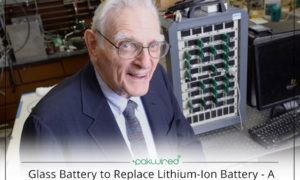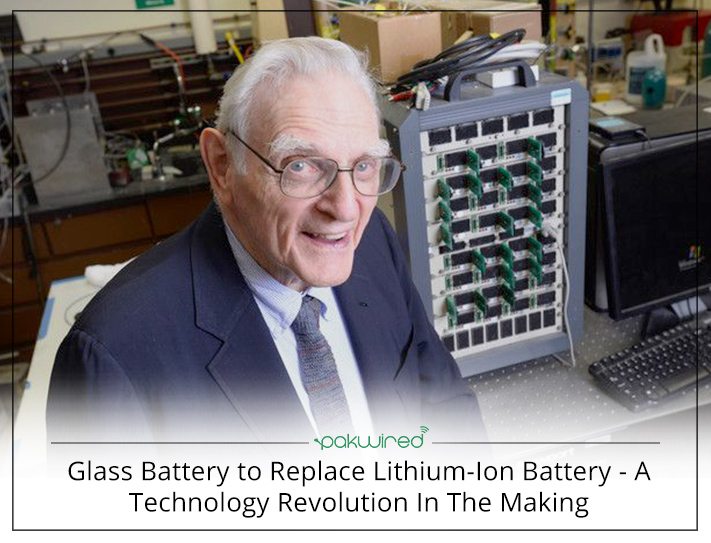As far as the trend study goes, electric car sales have increased up to 60% as compared to last year. By 2022, they’re anticipated to cost the same as other auto vehicles. The assumption at work in that projected trend is that the lithium-ion battery will always be the main power source for the electric vehicles. A group of researchers at the University of Texas at Austin have devised a new lithium/sodium glass battery technology which is expected to upheave the electric vehicle business.
The co-inventor of the lithium-ion battery and emeritus professor at the Cockrell School of Engineering at the University of Texas, John Goodenough said:
“I think we have the possibility of doing what we’ve been trying to do for the last 20 years. That is, to get an electric car that will be competitive in cost and convenience with the internal combustion engine”
He further said that this technology will also be able to store isolated solar and wind power on the electric grid.
Also Read: Uninstalling Facebook will boost your Android phone’s battery life by 20%
However, there have been big and small inventions in the battery industry. In 2014, a cotton-based battery design was introduced by a group of Japanese researchers but the design seems outdated now since there has been no further research on this technology. Similarly, the success of the glass battery cannot be confirmed on the basis of research.
While talking about the development and research of the glass battery, Donald Sadoway, a preeminent battery researcher and MIT materials science and engineering professor, said:
“When John Goodenough makes an announcement, I pay attention. He’s tops in the field and really a fantastic scientist. So, his pronouncements are worth listening to”
Invention of Lithium-Ion Battery
Goodenough said that when the first lithium-ion battery was invented, no one cared to bat an eye on the new invention until the Japanese companies such as Sony began using these batteries in their products. Right now, all big and small devices and even automobiles run on lithium-ion batteries which were invented in the 1980s.
How is Glass Battery made?
In the new glass battery, glass is doped with different reactive alkali metals such as lithium or sodium as part of the battery’s electrolyte. According to latest research papers and patent filling, it has been revealed that the lithium or sodium-doped glass electrolyte will devise a whole new field for chemistry and physics.
3x Storage Capacity
It has been found that, as compared to lithium-ion battery, the glass battery has three times more storage capacity. In addition, the new electrolyte is not flammable, thereby, eliminating the danger of causing fire in devices. In this way, if the concept of glass battery actually comes to life and lives long enough to be launched worldwide, the issues of combustion in laptops, mobiles and other devices will become a problem of the past.
Quick Read: Reports of iPhone getting exploded following Samsung’s battery afflictions
Fast Charging
The co-developer of lithium-glass battery, Maria Helena Braga said that the battery takes only few minutes to charge. The reason behind this phenomenon is due to the greater charge-storage capacity of the battery offered by the sodium/lithium glass doping. In this way, the battery acts as an extremely efficient super capacitor.
She also said that the battery is capable of withstanding thousands of charge-discharge cycle and is expected to work in extreme weather conditions ranging from -20ºC to 60ºC. Also, in the event that they can switch the battery’s ionic particle from lithium to sodium, the batteries can be sourced more sustainable and reliable. As opposed to swinging to questionable mining operations in a couple of South American nations for lithium, researchers could source sodium in boundless supply from the world’s sea water.
Donald Sadoway said that his whole attention is on the ability of the battery to hold the charge and not on how fast it charges. He said:
“The issue is not can you do something at a high charge rate. My big question is about capacity fade and service lifetime”
However, he said that the biggest problem this battery has solved is the inflammation of batteries. He added:
“Addressing the [battery] safety issue is, I think, a giant step forward. People have been talking about solid-state electrolytes for 20 years. But I can’t point to a commercial product yet…. If he can give us an electrolyte that is devoid of these flammable, organic solvents, that’s salutary in my opinion”
Once this technology is good to go, there will be a lot of achievements. Goodenough said that the anode and electrolyte for the battery are almost in the final stages of research but the main question is the development of the cathode which will surely bring the battery in a firm place in the technology market.
Goodenough stated:
“The next step is to verify that the cathode problem is solved. And when we do [that] we can scale up to large-scale cells. So far, we’ve made jelly-roll cells, and it looks like they’re working fairly well. So I’m fairly optimistic we’ll get there. But the development is going to be with the battery manufacturers. I don’t want to do development. I don’t want to be going into business. I’m 94. I don’t need the money”
Source: IEEE Spectrum


